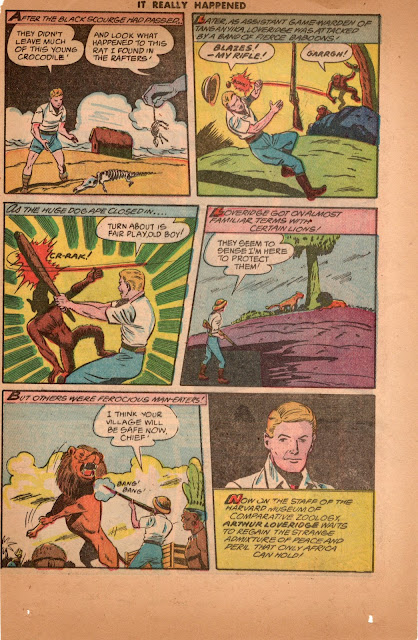Arthur Loveridge (1891–1980) is today well-known for
his contributions to herpetology. He served as an Associate in Zoology and
later as Curator in the Museum of Comparative Zoology at Harvard University for
33 years (1924–1957), where his specialty was African herpetology. Loveridge
published numerous papers and monographs based on his time as first Curator at
the National Museum of Kenya (Nairobi) (1914–1921), his service as Game Warden
in Tanganyika (1921–1924), and his later five long expeditions to East Africa over
the period 1926 to 1949. Additional information on Loveridge is in Kraig
Adler’s Contributions to the History of Herpetology, Volume 1 (1989,
SSAR Contributions to Herpetology No. 5, pp. 111–112).
While in Kenya, Loveridge was a member of the East
African Mounted Rifles during World War I. During three years of service, he
traveled extensively through what was then German East Africa (now Tanzania),
naturally collecting amphibians and reptiles throughout his military travels
despite the wartime danger. Loveridge
later published a popular book on his adventures in East Africa, Many Happy
Days I’ve Squandered (1944, Harper & Brothers, 278 pp.), which was
republished in several editions, including an Armed Services Edition published
by the U.S. Government for the troops during World War II. It was likely this
latter edition that led to Loveridge’s entry into the world of comic books.
It Really Happened
was published from 1944 to 1947 by William H. Wise & Company in New York
City. The series of 11 issues was printed in comic book format on newsprint
quality paper because of the wartime scarcity of better-quality paper. The
series featured stories of biography and history, and issues highlighted real
war accounts of actual events and acts of heroism and courage. Most of the non-war
stories focused on adventure and unusual or interesting people and places.
Copies sold for US 10¢.
In 1944, It Really Happened included a story
entitled “Savage Safari” focusing on Arthur Loveridge. The artist and story
editor are uncredited. The story covers five unpaginated pages (see Figures
below) published in Issue 4 (Vol. 2, No. 1, total of 52 pp. in issue, including
covers and advertisements). It traces Arthur’s interest in nature, particularly
reptiles, through his museum appointment in Kenya and his adventures in the
Mounted Rifles and time as Game Warden. Snakes are prominently featured. In “Savage
Safari,” Arthur Loveridge may be the only herpetologist to have his story
depicted in a widely-circulated comic book. Other comics, such as “Mark Trail”
by Ed Dodd (no relation), have featured amphibians and reptiles, but not
personalities.
Submitted by C. Kenneth Dodd, Jr.
Figs. 1–5: “Savage Safari”
from It Really Happened (Issue 4, 1944). Author’s collection.







